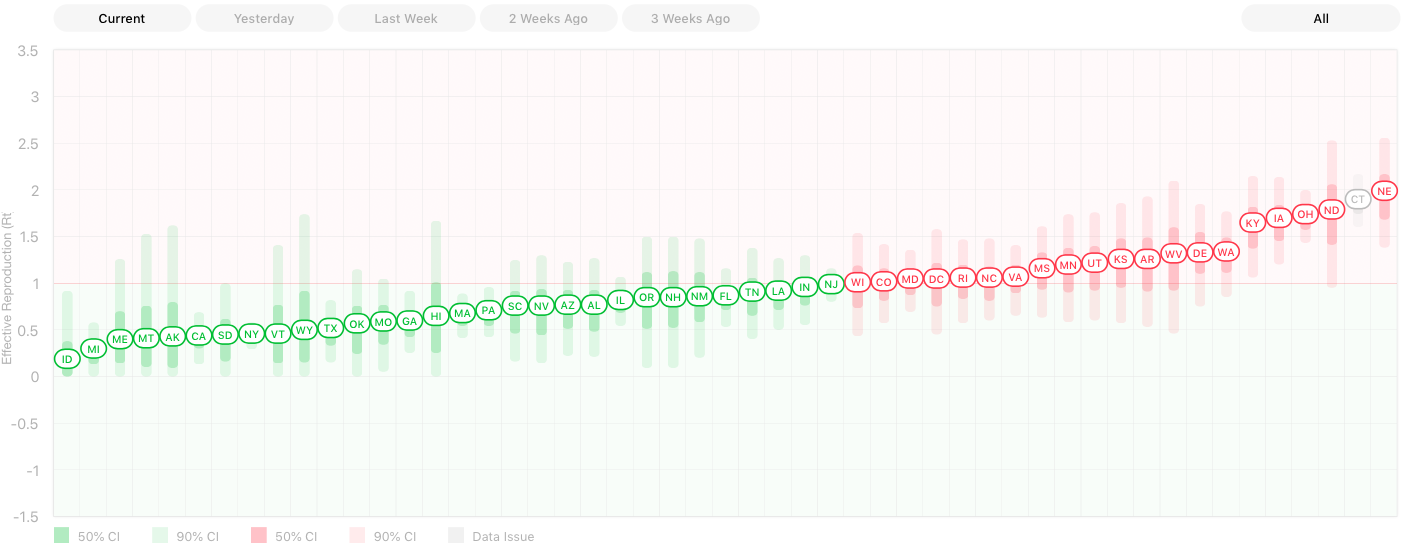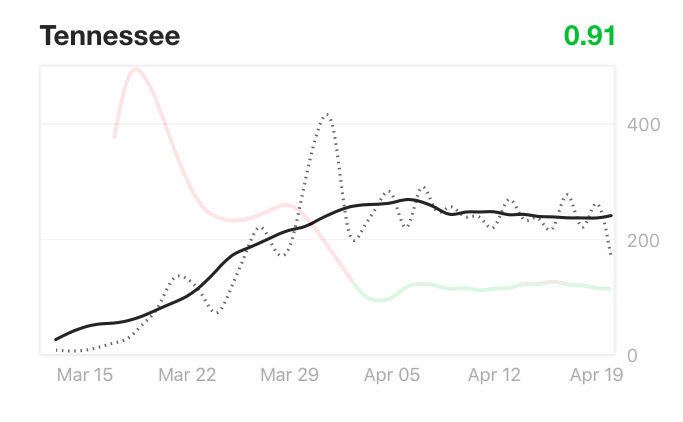 rt.live
rt.live
If you wonder if we’re beating the spread of coronavirus in Tennessee, the answer may come from the founders of Instagram.
The social platform’s co-founders Kevin Systrom and Mike Krieger launched a new website, rt.live, in early April. Data is fed to the site from the all-volunteer COVID Tracking Project, which updates information daily from health agencies across the country. From all of that data, Systrom said one metric “has the most promise.”
“It’s called Rt — the effective reproduction number,” Systrom wrote. “We can estimate it, and it’s the key to getting us through the next few months.”
[pullquote-1] Dive into Systrom’s full explanation of Rt here. But here’s the quick-and-dirty on it. The figure, basically, tells you the number of infections that will be caused by one infection. States with an Rt of 1 have slowed the spread of the virus. The virus is spreading in states with an Rt number over 1.
 rt.live
rt.live
 rt.live
rt.live
25,000 people signed up for the platform the first day. When he left the company a year ago, Instagram had over a billion users. With this, Systrom said he became interested in the science of how things grow during his time at the company.
He began to apply different predictive models to watch how companies grow. He wondered if models could be applied to coronavirus. He and Krieger built the model and have been publishing the results on the website.
The Rt predictive numbers have tracked real data, Systrom said. However, “This is a work in progress. I don’t have all the answers, nor do I claim to know the future for certain.”
Systrom said he hopes the information helps policymakers make informed decisions, certainly as many states — like Tennessee — are announcing plans to re-open their economies.
[pullquote-2] “Without the use of a clear metric on our ability to contain the coronavirus pandemic, it’s difficult to imagine that we’ll manage a return to normalcy anytime soon,” Systrom said.
So, how does Tennessee fare in the model? The Rt.live site said Tennessee’s number was at .91, showing a slight decline of the virus in the state. The number put Tennessee in the middle of most states. Idaho is at the bottom with an Rt of .19. Nebraska is at the top with an Rt of 2.
 rt.live
rt.live
 rt.live
rt.live
The state’s Rt number overlaid with new coronavirus case counts.
The Tennessee figures track closely with numbers published by Vanderbilt University researchers last week. Their transmission number refers to the average number of additional people infected by one infected person, much like the Rt.live site.
As of Thursday, April 16th, the state’s transmission number had declined to around 1.0. A transmission number below 1.0 for a sustained period is necessary to slow an epidemic, the researchers said.
The Vanderbilt researchers said transmission rates here have settled into a “simmer.” While the news seemed positive, they warned the situation remained “delicate and uncertain.”
The Vanderbilt figures last week showed a transmission number of somewhere between 1.25 and .90 for the Mid-South region, which includes Shelby County and four neighboring Tennessee counties.
 Vanderbilt University
Vanderbilt University
If Vanderbilt researchers maintain their publishing schedule, new statewide transmission rate figures will publish Wednesday.